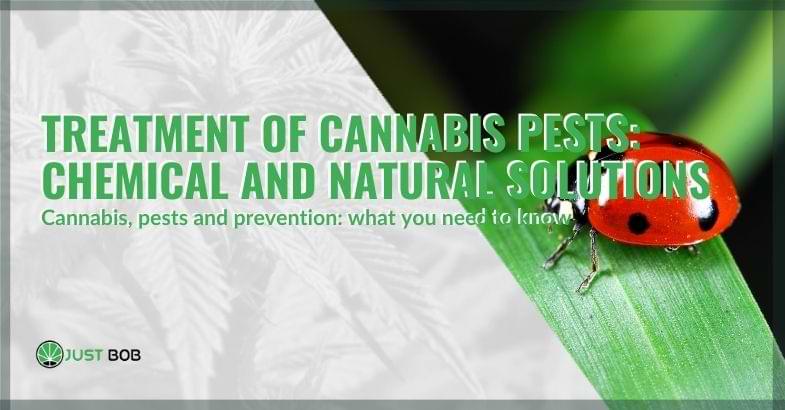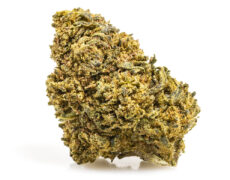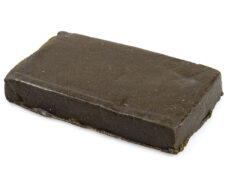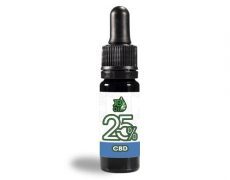Modified on: 21/12/2023
Cannabis, pests and prevention: what you need to know
Growing the cannabis plant is far from easy because it is often subject to attacks by pathogens, mold and pests.
Ignoring what are the most common and not knowing the most suitable solutions risks compromising the entire harvest!
Here is why in this article we will understand:
- which are the parasites that attack cannabis and CBD cannabis;
- what preventive solutions and measures to take.
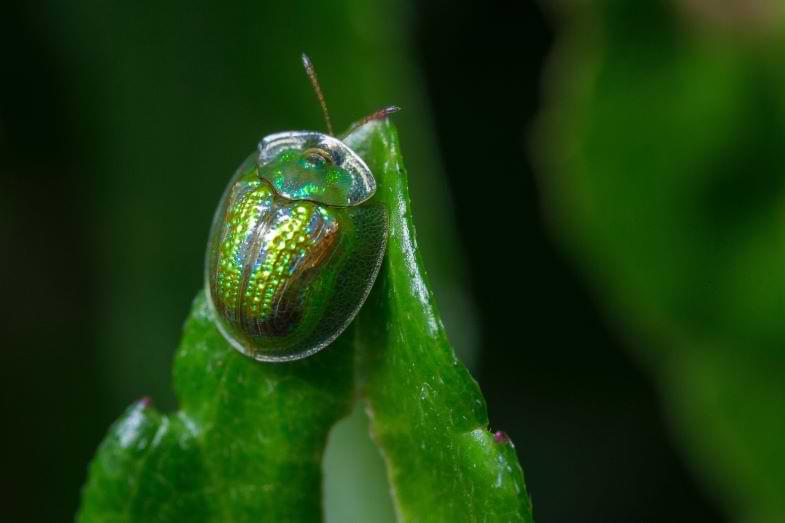

Why do cannabis plants get sick? These are the most common pests
Did you know that soil quality directly affects plant susceptibility or resistance to disease, stress, drought and pests?
By creating a healthy environment where plants can live and grow, rich in organic matter, worms and high-quality compost, the plant’s immune system will be stronger. Just like human beings, with our lifestyle and our food choices.
That’s right, that’s right.
Stressed plants ‘get sick’ more easily and attract and succumb more easily to pest damage such as:
- thrips;
- white flies;
- mites;
- leaf miners;
- aphids;
- cabbage.
The same applies to those who rely on synthetic fertilizers and chemicals to feed.
Growers can add some changes to their cannabis soil that naturally discourage pests, either as part of the initial soil mix, or later as top-dressing.
What are the symptoms of the cannabis plant virus?
Cannabis plants, like any other cultivated crops, are susceptible to various pests and diseases, including viral infections. One of the notable viruses affecting marijuana plants is the Tobacco Mosaic Virus (TMV). Understanding the symptoms of this viral disease is crucial for both growers engaged in cannabis cultivation.
Symptoms of TMV on cannabis plants often manifest in distinct patterns on the leaves. These patterns resemble a mosaic, with light and dark green areas, hence the name. This mosaic-like appearance occurs due to the virus puncturing plant cells, disrupting the natural pigmentation and leading to the characteristic discoloration.
For marijuana growers, the impact of TMV extends beyond the visual. Stunted growth is a common consequence, as the virus interferes with plant growth processes. As a result, marijuana plants infected with TMV may exhibit reduced vigor and fail to reach their full developmental potential. This is a cause for concern for both indoor and outdoor growers, as it can significantly affect cannabis crops.
Moreover, TMV can weaken cannabis plants by compromising their ability to carry out essential physiological functions. Plant cells infected with the virus may experience deformities, affecting the overall health of the cannabis plant. The plant’s ability to photosynthesize, absorb nutrients, and maintain proper water balance may be compromised, leading to further deterioration.
The symptoms of TMV on cannabis leaves may not only impact the immediate plant but can also have broader implications for the entire cannabis crop. Outdoor plants are particularly vulnerable, as the virus can spread rapidly through aphid infestations, tiny white bugs, or other pest mites that may serve as carriers.
Indoor growers, managing their cannabis plants in a confined grow room, need to be especially vigilant. The close proximity of plants in indoor growing environments can facilitate the rapid transmission of TMV. Implementing measures to prevent the introduction of the virus, such as regular inspections, proper sanitation, and the use of insecticidal soaps, is crucial for maintaining plant health.
To combat TMV and mitigate its impact on cannabis crops, some growers employ natural predators such as predatory mites. These beneficial organisms help control the population of pests like broad mites, which can serve as vectors for the virus.
In conclusion, recognizing the symptoms of TMV on cannabis plants is essential for growers seeking to ensure the health and vitality of their crops. Stunted growth, mosaic-like patterns on leaves, and weakened plant cells are key indicators of the presence of this viral disease. Whether cultivating cannabis indoors or outdoors, vigilance and proactive measures are vital for preventing and managing TMV and other potential threats to cannabis cultivation.
Organic remedies to combat (and prevent) cannabis pests
Neem seed flour has a dual purpose.
It is a modification that provides small amounts of micro and macronutrients to the plant, which:
- increases soil microbial activity;
- discourages the parasites.
In general, most parasites do not like the smell of neem. It can help control unwanted populations of nematodes, fungi and soil pathogens.
Alternatively, you can use neem oil.
When used as a foliar spray, it can kill adult spider mites and prevent already laid eggs from developing into mites. In addition, it kills and prevents further infestations of white flies. Fungal midges can be controlled above and below the soil when neem is used as root washing. In addition, it eliminates the bad nematodes that cause rot and leaves the good ones alone, accelerates the putrefaction of decomposing matter for faster bioavailability of organic nutrients for the plant.
Unlike chemical sprays (which kill everything good or bad), ladybugs and butterflies, earthworms and bees are not damaged by neem.
It acts as a slight growth stimulant when watered for other problems. If applied regularly as a prophylactic to cannabis plants from a young age, most of the pathogens, molds and insects that love CBD flowers can be completely prevented, both indoors and outdoors.
Other widely used methods are crustacean or crab flour, which adapts to the same profile and has similar benefits, in particular protecting against nematodes of the root node.
Finally, the use of aloe vera and silica in routine watering or foliar sprays contributes to strengthening the immune system and the general resistance of plants.
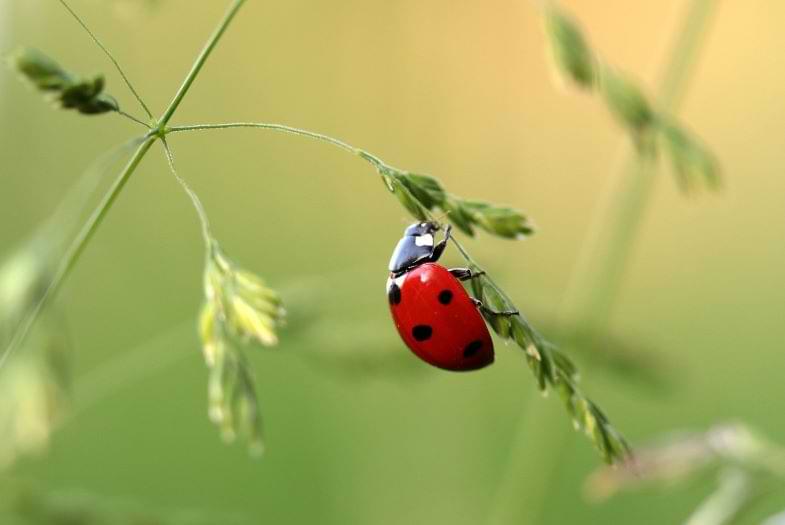

Beneficial insects: using insects to fight cannabis pests
Some insects are undesirable around plants, while others are welcomed with open arms!
Why?
Simple, because many insects prey on other harmful insects. Ladybugs and chrysopidae are a striking example.
Ladybug
Ladybugs are fierce predators of aphids, mites, cochineals, white fly and other soft-bodied insects, especially in their larval form.
According to the Planet Natural Research Center, a ladybug eats up to 50 aphids a day: this means that during its life, a single ladybird is able to consume up to 5,000 aphids!
A hemp grower fighting soft insects may consider releasing ladybirds on its plants as organic control of cannabis pests, both for outdoor and greenhouse cultivation.
But beware.
When releasing ladybirds, it is very important to make sure they don’t fly away. Here are three tips to prevent this from happening:
- wet the plants;
- place the ladybugs immediately after sunset;
- place a food source near the place where ladybugs, for example aphids, will be found.
Chrysopidae
Chrysopidae offer benefits very similar to those of ladybugs. They feed on aphids, grasshoppers, mites, cochineals, thrips and other soft-bodied insects. In most cases, they are sold and shipped in the form of eggs, as they can be quite brittle.
Read also: How to recognise high-quality marijuana?
What are the most common diseases on cannabis plants?
Cannabis plants, whether cultivated indoors or outdoors, are susceptible to a range of pests and diseases that can impact their overall health and yield. Among the most common pests affecting cannabis crops are spider mites, fungus gnats, and leaf miners. These insect pests can puncture plant cells, weakening cannabis plants and hindering their growth.
For marijuana growers, both indoor and outdoor, the challenge lies in managing these common pests to ensure the optimal development of marijuana plants. Indoor growers may face issues such as fungus gnat larvae infestations in their grow rooms, while outdoor growers might encounter broader challenges like aphid infestations or bud rot.
Neem oil is often employed as a natural remedy to address these problems in cannabis cultivation. It serves as an effective solution against pests such as spider mites and aphids, promoting plant health by mitigating the impact of these common pests on cannabis leaves and plant tissues.
Among the most common cannabis diseases are root rot and bud rot, caused by fungal infections. These diseases can spread rapidly, affecting plant roots and compromising the overall well-being of the cannabis crop. White powdery substance on the leaves is indicative of another common issue – powdery mildew, a fungal disease that can reduce yields if left unaddressed.
To combat these challenges, growers often turn to various methods, including the introduction of natural predators such as predatory mites, parasitic wasps, and beneficial nematodes. These organisms help control the population of harmful pests like spider mites and caterpillar larvae, contributing to a healthier cannabis crop.
In indoor growing environments, maintaining the cleanliness of the grow room is crucial to prevent infestations of pests like fungus gnats and aphids. Insecticidal soaps and horticultural oils are commonly used to kill aphids and control the spread of sooty mold, ensuring the plant’s ability to thrive.
For both indoor and outdoor cannabis growers, vigilance is key. Regular inspections of plant leaves, stems, and roots are necessary to detect the presence of pests and diseases early on. Dilute potassium bicarbonate spray is often applied as a preventive measure against fungal diseases, offering protection to the plant tissues.
In hydroponic systems, where cannabis is grown without soil, maintaining the health of the root systems becomes paramount. Growers employ various techniques, including the use of diatomaceous earth to ward off pests like mealy bugs and hemp russet mites, preventing bacterial infections that can lead to reduced yields.
In conclusion, cannabis growers face a range of challenges related to pests and diseases. From spider mites and fungus gnats to root rot and bud rot, the spectrum of issues is diverse. However, by employing natural remedies, introducing beneficial organisms, and staying vigilant in plant care, cannabis growers can mitigate the impact of these common pests and diseases, ensuring a successful and healthy cannabis crop.
What are the elements that must be considered by indoor and outdoor growers for the care of cannabis plants?
Cannabis growers, whether cultivating indoors or outdoors, need to consider a range of elements to ensure the health and vitality of their plants. Here are some key factors that both growers must pay attention to:
1. Cannabis Plants:
- Understanding the specific needs and characteristics of cannabis plants is fundamental. This includes knowledge of different strains, growth patterns, and flowering requirements.
2. Plant Growth:
- Monitoring and facilitating healthy plant growth is crucial. This involves providing the appropriate nutrients, maintaining optimal lighting conditions, and ensuring proper irrigation.
3. Common Cannabis Pests:
- Awareness of the most common cannabis pests, such as fungus gnats, leaf miners, russet mites, and aphids, is essential. Regular inspections and preventive measures help manage these pests and protect the plants from potential infestations.
4. Plant Diseases:
- Recognizing and addressing plant diseases is vital for both growers. Fungal diseases, viral diseases, and issues like root rot can significantly impact cannabis crops if not identified and treated promptly.
5. Neem Oil:
- Neem oil, derived from the neem tree, is a valuable tool for cannabis growers. It serves as a natural remedy against a variety of pests and can be particularly effective in managing issues like fungus gnats and broad mites.
6. Predatory Mites:
- Introducing predatory mites is a biological control method that can help manage pest populations. These beneficial organisms feed on harmful pests, contributing to a more balanced and pest-resistant environment.
7. Plant Tissue and Stem Care:
- Protecting the integrity of plant stems is crucial. This involves implementing practices to prevent damage, particularly from pests like hemp moths and mealy bugs that can harm tissues.
8. Cannabis Bugs:
- Identifying and addressing various hemp bugs is part of a comprehensive care routine. Whether dealing with adult fungus gnats or other commonly found pests, growers must be proactive in managing these issues.
9. Hemp Moth:
- The hemp moth is a potential threat to cannabis crops. Growers should be aware of its life cycle and habits to implement targeted control measures.
10. Aphid Infestation: – Aphids can quickly become a significant problem for cannabis plants. Implementing preventive strategies and promptly addressing any infestation is crucial for plant health.
In conclusion, successful cannabis cultivation, whether indoors or outdoors, involves a holistic approach that considers the specific needs of the plants, promotes healthy growth, and addresses potential challenges such as pests and diseases. By staying informed and implementing proactive measures, cannabis growers can foster optimal conditions for their plants and enhance overall crop success.
Conclusion
In this article we have seen some remedies to combat cannabis parasites.
As you may have read, good prevention and the use of natural resources (far preferable to chemical treatments) can help keep your plants healthy and prevent CBD products like CBD hash from poor quality.
See you soon!

